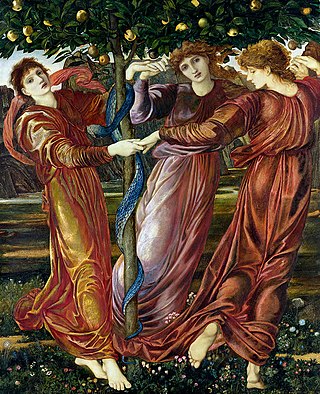
In Greek mythology, the Hesperides are the nymphs of evening and golden light of sunsets, who were the "Daughters of the Evening" or "Nymphs of the West". They were also called the Atlantides from their reputed father, Atlas.
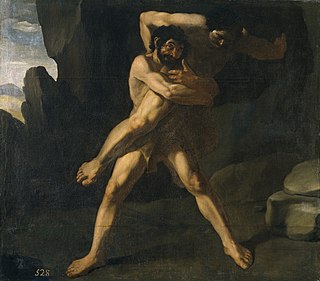
Antaeus, known to the Berbers as Anti, was a figure in Berber and Greek mythology. He was famed for his defeat by Heracles as part of the Labours of Hercules.

Giambologna, also known as Jean de Boulogne (French), Jehan Boulongne (Flemish) and Giovanni da Bologna (Italian), was the last significant Italian Renaissance sculptor, with a large workshop producing large and small works in bronze and marble in a late Mannerist style.

Antonio del Pollaiuolo, also known as Antonio di Jacopo Pollaiuolo or Antonio Pollaiuolo, was an Italian Renaissance painter, sculptor, engraver, and goldsmith, who made important works in all these media, as well as designing works in others, for example vestments, metal embroidery being a medium he worked in at the start of his career.

Giovanni di Niccolò de Luteri, better known as Dosso Dossi, was an Italian Renaissance painter who belonged to the School of Ferrara, painting in a style mainly influenced by Venetian painting, in particular Giorgione and early Titian.
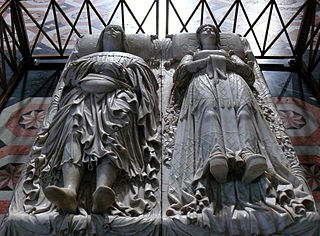
Cristoforo Solari, also known as il Gobbo, was an Italian sculptor and architect. He was the brother of the painter Andrea Solari.
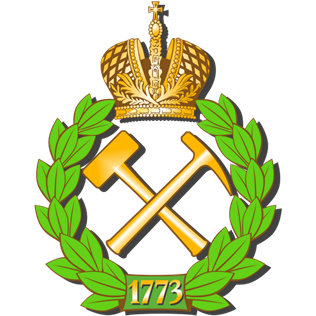
Saint Petersburg Mining University, is Russia's oldest technical university, and one of the oldest technical colleges in Europe. It was founded on October 21, 1773, by Empress Catherine the Great, who realised an idea proposed by Peter the Great and Mikhail Lomonosov for training engineers for the mining and metals industries. Having a strong engineering profession was seen by many Russian rulers as a vital means of maintaining Russia's status as a great power. As historian Alfred J. Rieber wrote, "The marriage of technology and central state power had a natural attraction for Peter the Great and his successors, particularly Paul I, Alexander I, and Nicholas I". All three had had a military education and seen the achievements of the engineers of revolutionary and imperial France, who had reconstructed the great highways, unified the waterways and erected buildings throughout Europe in a more lasting tribute to the French than all of Napoleon's victories.

Hercules Unchained is a 1959 Italian-French epic fantasy feature film starring Steve Reeves and Sylva Koscina in a story about two warring brothers and Hercules' tribulations in the court of Queen Omphale. The film is the sequel to the Reeves vehicle Hercules (1958) and marks Reeves' second – and last – appearance as Hercules. The film's screenplay, loosely based upon various Greek mythology and plays by Aeschylus and Sophocles, was written by Ennio De Concini and Pietro Francisci with Francisci directing and Bruno Vailati and Ferruccio De Martino producing the film.
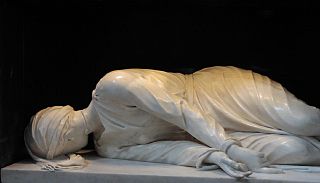
Stefano Maderno was one of the greatest Roman sculptors of the early 17th century.
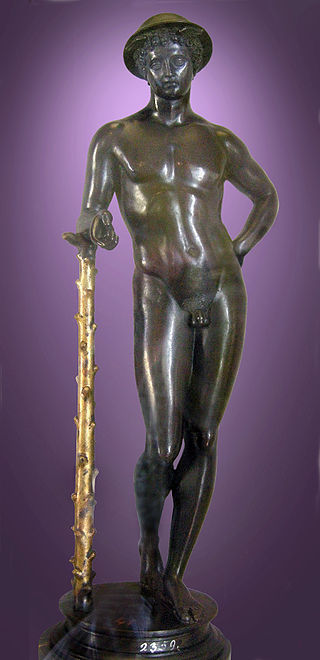
Pier Jacopo Alari Bonacolsi, called L'Antico by his contemporaries, and often Antico in English, the nickname given for the refined interpretation of the Antique they recognized in his work, was a 15th- and 16th-century North Italian Renaissance sculptor, known for his finely detailed small bronzes all'Antica—coolly classicizing, often with gilded details, and silver-inlaid eyes, a refinement that is found in some classical and Hellenistic Greek bronzes.
Hercules is a 2005 American television miniseries chronicling the life of the legendary Greek hero, Heracles, called Hercules in this series. It is most often aired on television as a two-part miniseries: the first part documents his early life in Tiryns and his desire and marriage to the lady Megara; the second part follows the more widely recognised part of his life, in seeking redemption for the madness-induced murder of his family.

Hercules Brabazon Brabazon was an English artist, accomplished in Turner-manner watercolours.
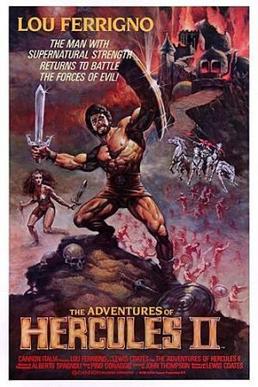
The Adventures of Hercules is the 1985 sequel to the 1983 film Hercules. It was written and directed by Luigi Cozzi and has bodybuilder-turned-actor Lou Ferrigno reprising his role as the title character.

The Villa di Castello, near the hills bordering Florence, Tuscany, central Italy, was the country residence of Cosimo I de' Medici, Grand Duke of Tuscany (1519-1574). The gardens, filled with fountains, statuary, and a grotto, became famous throughout Europe. The villa also housed some of the great art treasures of Florence, including Sandro Botticelli's Renaissance masterpieces The Birth of Venus and Primavera. The gardens of the Villa had a profound influence upon the design of the Italian Renaissance garden and the later French formal garden.

Hercules slaying Antaeus, c. 1460, is a painting by the Florentine artist Antonio del Pollaiuolo. It is small at 6 x 3 1/2 inches, painted in egg tempera on a panel of wood. It is now in the Uffizi gallery, Florence.
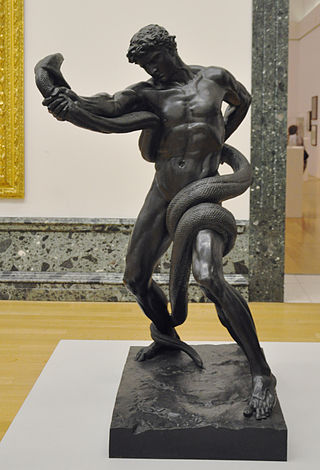
An Athlete Wrestling with a Python was the first of three bronze sculptures produced by the British artist Frederic Leighton. Completed in 1877, the sculpture was a departure for Leighton, and heralded the advent of a new movement, New Sculpture, taking realistic approach to classical models. It has been described as a "sculptural masterpiece" and as "possibly Leighton's greatest contribution to British art". Despite its indebtedness to the Classical tradition, it can be understood as one of the first stirrings of modern sculpture in Britain as well as in Europe. The Athlete was arguably the most influential piece of English sculpture of the 19th century.

Hercules and Antaeus is a 1531 oil painting by German artist Hans Baldung. It was donated in 1892 by Edward Habich to the Gemäldegalerie Alte Meister (Kassel) in Germany, where it still hangs.

Hercules and the Hydra is a c. 1475 tempera grassa-on-panel painting by Antonio del Pollaiuolo, forming a pair with the same artist's Hercules slaying Antaeus. Both works are now in the Galleria degli Uffizi in Florence. It measures 17 cm by 12 cm, small like all his surviving mythological paintings. It is assumed that both these are miniature copies by the artist of two out of the three enormous paintings on canvas of the Labours of Hercules commissioned from Antonio and Piero del Pollaiuolo by Piero di Cosimo de' Medici for the Sala Grande of the Palazzo Medici in the 1460s, which have now been lost.
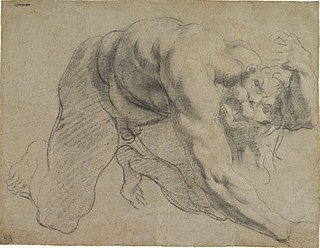
The Palazzo Sampieri frescoes are a set of paintings by Annibale, Agostino and Ludovico Carracci in the Palazzo Sampieri in Bologna. They form the last surviving collection of works by the three artists.
Walter Leo Hildburgh (1876-1955) was an American art collector, sportsman, traveller, scientist and philanthropist.


















